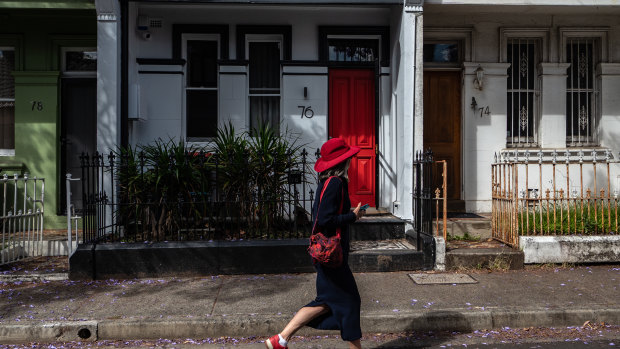One graph shows why it’s so hard to buy a house, even in a downturn

Key points
- Property value growth has outstripped wage increases over the past decade, climbing at more than twice the rate.
- Improving wage growth will provide some support to buyers, but the downturn has meant little improvement in affordability because of rising interest rates.
Property listings
The pay packets of Australian workers may be on the rise, but property price growth has soared well above sluggish wages in recent years.
Home values climbed at more than twice the rate of wages over the past decade, CoreLogic modelling shows, making it increasingly difficult for first home buyers to break into the property market.
Property prices may be falling, but they have grown at twice the rate of wages over the past decade.Credit:Flavio Brancaleone
CoreLogic Australia’s head of research Eliza Owen said while wages growth is now stronger than the declining property market, there’s been little improvement for those trying to purchase their first home.
“The cost of debt has risen substantially as [interest rates rise] so it doesn’t necessarily mean a vast improvement in affordability, but it does give people a chance to catch up in their savings,” she said.
Wages lifted 3.1 per cent over the year to September, growing at their fastest pace in almost a decade, the latest figures from the Australian Bureau of Statistics show. The nation’s median property value rose by 1.7 per cent in the same time frame.
However, longer term, property values were up 66.6 per cent over the decade compared to a 25.2 per cent wage increase. The disparity was greater in NSW, Tasmania and the ACT, where home values climbed at least three times faster than wages.
Owen said wages had been constrained by low levels of productivity in the Australian economy, and diminishing bargaining power in the labour force. Structurally lower interest rates had given buyers greater borrowing power and supported housing market booms.
While recent property price falls have slightly reduced the time taken to save a home deposit, affordability has deteriorated due to increasing mortgage repayments.
Values nationally would need to fall about 20 per cent to offset the impact of rising interest rates, Owen said. The national median house value has dropped 7 per cent to date.
St George Bank chief economist Besa Deda said wages had been trending lower for most of the past decade, while property prices rose on the back of strong population growth and low interest rates.
Wages growth was now picking up from very low levels amid a tight labour market, and she expected they would continue to grow, helping those facing higher mortgage costs and potential buyers. She forecast prices would keep falling while interest rates rise.
“It won’t prevent dwelling prices declining … but certainly I think it would help with the floor, and it would minimise [mortgage] stress appearing for households,” she said.
Despite wage growth, buyers are still being pushed towards more affordable properties, Deda noted, as they faced reduced borrowing power, and higher mortgage and living costs. She expected to see more resilience in the apartment market as a result.
Sydney mortgage broker Anthony Landahl said demand for credit had dropped back over the year, but appeared to be stabilising.
Buyers were getting over the shock of rapid rate increases, and those with good employment and savings had become more willing to transact in the declining market.
“It’s taking a bit of time [to buy] because stock levels are lower, but they’re tending to be able to purchase properties within their budget at prices that have come off quite a lot,” said Landahl, managing director of Equilibria Finance.
A strong employment market, together with saving buffers built up during the pandemic, were helping borrowers cope with increased mortgage repayments, Landahl added, as was the option to refinance to a more competitive rate if needed.
Wage growth should also help limit mortgage distress when high volumes of borrowers rolled off fixed mortgage rates next year.
The Morning Edition newsletter is our guide to the day’s most important and interesting stories, analysis and insights. Sign up here.
Most Viewed in Property
Source: Read Full Article
